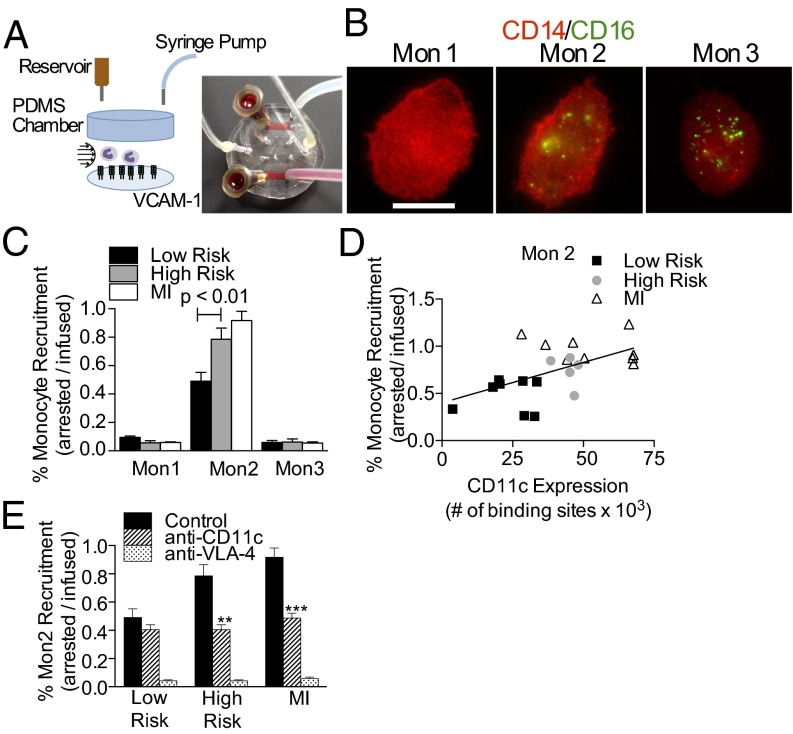Fig. 5.
Lab-on-a-chip analysis of monocyte recruitment on VCAM-1 under hydrodynamic shear. (A) Schematic and image of the arterial mimetic device detailed in SI Materials and Methods. (B) Arrested monocytes identified by anti-CD14 (red) and anti-CD16 (green) acquired using wide-field immunofluorescence (images are representative of 150–200 monocytes phenotyped per subject). (Scale bar, 10 μm.) (C) Postprandial monocyte recruitment efficiency for subjects categorized as low (fTG <200 mg/dL, n = 8) and high risk (fTG >200 mg/dL, n = 5) and MI patients (n = 8). (D) Recruitment efficiency plotted as a function of CD11c expression for postprandial study subjects and MI patients. A regression curve was fit to the means of low-risk, high-risk, and MI groups (Pearson r = 0.9957, R2 = 0.9915, P = 0.0587) (E) Integrin specificity of monocyte recruitment studied by application of blocking antibodies against CD11c and VLA-4 depicted for Mon2 and other subsets (Fig. S4). Statistics were measured against samples treated with the isotype antibody control for each group, and significance was determined by one-way ANOVA with Tukey posttest, **P < 0.01, ***P < 0.005.

